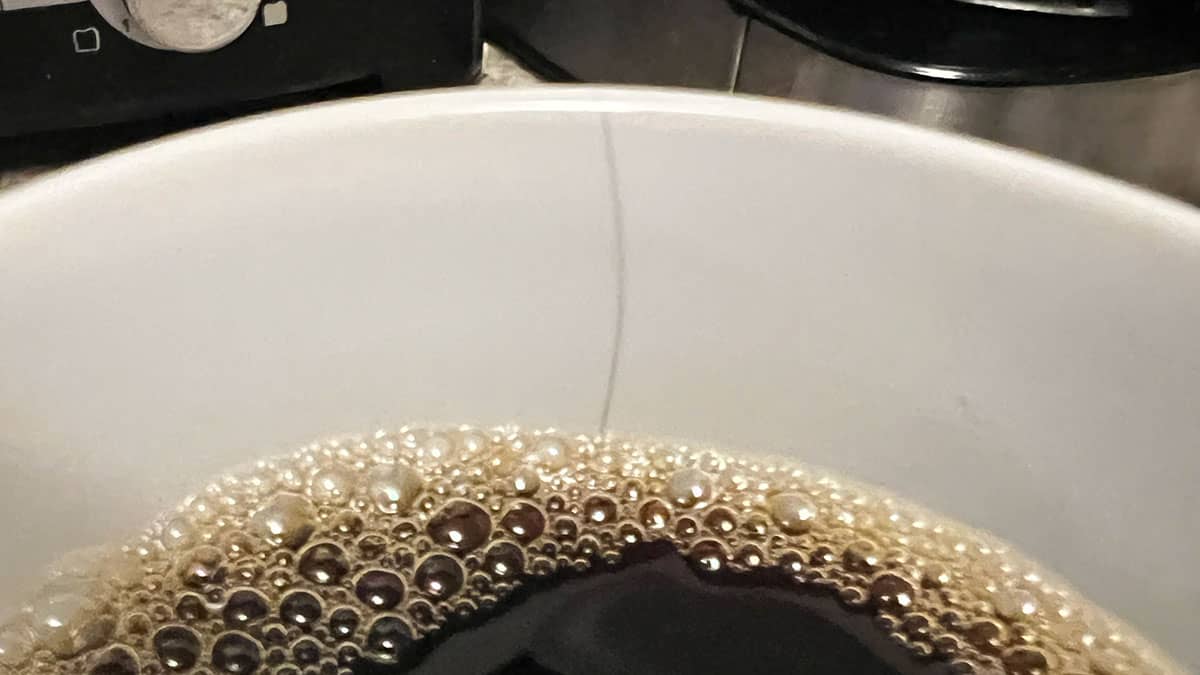This page may contain affiliate links. If you click and buy, we might get a small commission at no cost to you.
When it comes to our daily coffee rituals, many of us have a favorite mug. But have you ever noticed hairline cracks developing in your white coffee mugs? This phenomenon, while not detrimental to the mug’s functionality, is an interesting aspect of ceramic ware that’s worth exploring.
The Nature of Ceramic and Porcelain
Ceramic and porcelain, the primary materials used in making coffee mugs, are known for their durability and heat resistance. However, they are also prone to a type of fine cracking known as “crazing.”
What Causes Crazing?
Crazing refers to the network of fine cracks that can appear on the surface of glazed ceramics. This is often due to:
- Thermal Stress: Sudden changes in temperature, such as pouring hot coffee into a cold mug, can cause the material to expand and contract rapidly, leading to crazing.
- Age and Use: Over time, regular use and repeated washing can wear down the glaze, making it more susceptible to cracking.
- Material and Manufacturing: The composition of the ceramic, the quality of the glaze, and the firing process in manufacturing can all contribute to the likelihood of crazing.
Glazing and Its Impact
The glaze on a coffee mug is more than just an aesthetic choice. It’s a protective layer, but its different thermal expansion properties compared to the ceramic body can create tension, leading to crazing.
How Glazing Can Contribute to Cracks
- Mismatched Expansion Coefficients: If the expansion coefficients of the glaze and the ceramic body don’t match well, it can lead to stress and, eventually, cracking.
- Wear and Tear: Dishwashing and the use of harsh detergents can gradually degrade the glaze, making it more prone to crazing.
Preventing and Managing Hairline Cracks
While it’s challenging to completely prevent crazing, there are ways to minimize it:
- Gradual Temperature Changes: Avoid subjecting mugs to sudden temperature shifts.
- Gentle Cleaning: Hand washing and avoiding harsh detergents can help maintain the integrity of the glaze.
Can I Still Use My Mug?
Despite the appearance of hairline cracks, most crazed mugs remain safe for use. These cracks are typically superficial, affecting only the glaze and not the structural integrity of the mug itself. However, it’s important to monitor the condition regularly.
If the cracks seem to deepen or the mug leaks, it’s time to retire it. For everyday use, a mug with minor crazing is generally fine, but always prioritize safety and hygiene.
Does Microwaving Cause Crazing?
Microwaving can contribute to crazing in ceramic mugs. The rapid heating and uneven temperature distribution often caused by microwaves can exacerbate thermal stress on the mug.
This stress can accelerate the development of crazing, especially in mugs that are not specifically labeled as microwave-safe. To preserve the longevity of your mugs, it’s advisable to avoid microwaving them, particularly if they already show signs of hairline cracks.
When to Replace Your Mug
If a mug is severely crazed or if the cracks penetrate the ceramic body, it’s best to replace it, especially since deep cracks can harbor bacteria.
In conclusion, while hairline cracks in your coffee mug might be a minor annoyance, they’re a natural result of the materials and processes used in mug production. Understanding this can help us better care for our favorite mugs, ensuring they last as long as possible.



